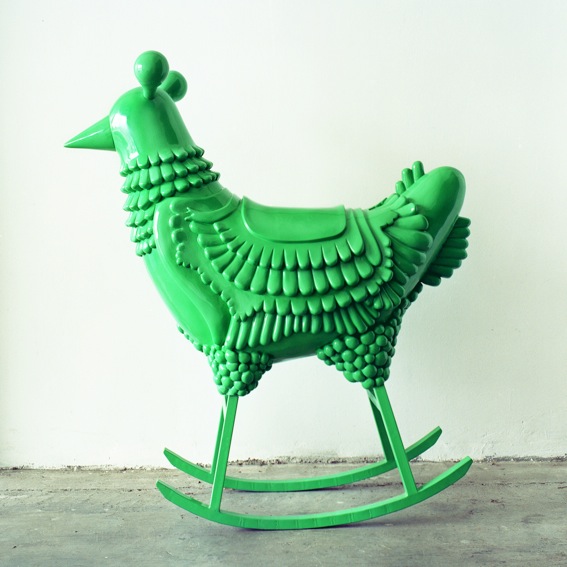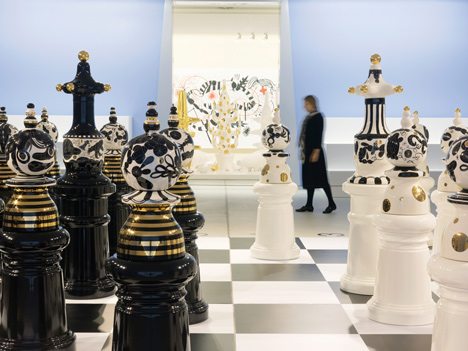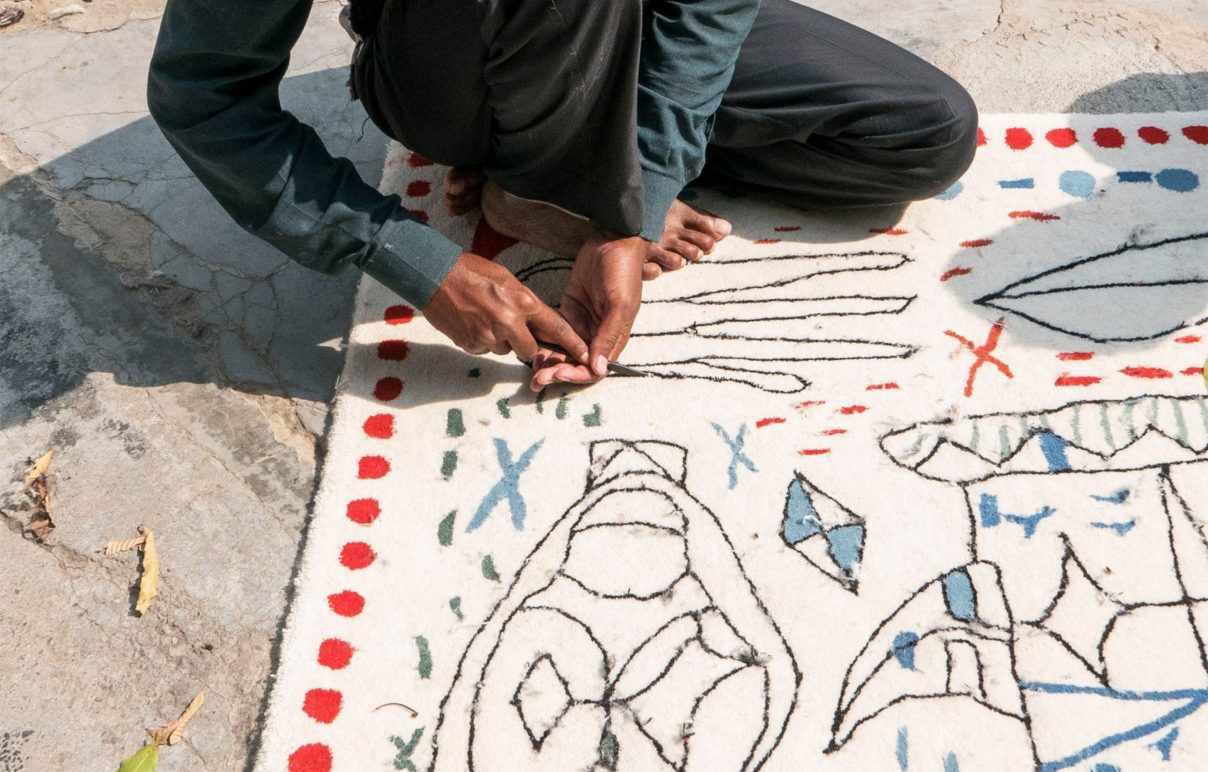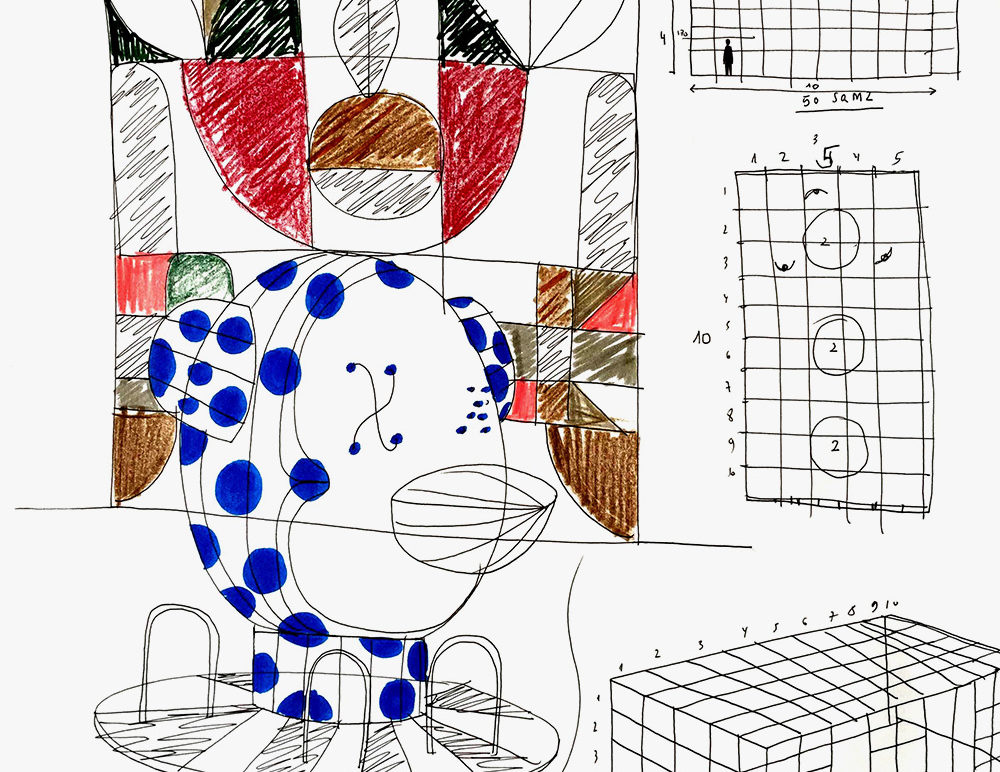
The Green Chicken rocking chair debuted in 2008 and is arguable Hayon’s most famous creation. This magical perception of the chicken perfectly captures Hayon’s fantastical approach to design.
Here’s what the artist has said about this infamous creature, “The chicken, a rather unexplored shape, found its place amount my green dreams. I wanted to portray this common bird as a sensational object by amplifying its characteristics and dimensions, turning it into a modern piece, one of great beauty and utility: a rocking chair. The movement, subtle and constant, would give the object a zoom-like trait, a sense of speed and dynamism. My green chicken has taken on a face, a shape, a place and a function.”
Image courtesy of: Hayon Studio
Chameleon might be the name most appropriate for Jamie Hayon. This Spaniard has designed everything from restaurant spaces to leather shoes… and just about anything you can imagine in-between. Hayon’s first job was with Fabrica, the Benetton funded design and communications academy based in Italy. Arriving at the young age of 24, Hayon was soon promoted to head the design department… which he did for several years prior to opening up his own studio. Since then, Hayon has won multiple accolades and added offices in Japan and Spain where he continues to stretch the imagination.

In 2013, Hayon designed an enormous chess set at the Groninger Museum the Netherlands. “The Tournament” pays tribute to the Battle of Trafalgar which in 1805 was fought by the British Navy against France and Spain. Aptly so, this installation was previously displayed in London’s Trafalgar Square for the city’s 2009 design festival.
Image courtesy of: Dezeen
Hayon beautifully describes his work, “The sculptures in my work are joyful and positive and inspired by playfulness.” Perhaps it was growing up in Madrid, among the influences of Salvador Dali. Or maybe it was having constant access to Picasso’s “Guernica” at Madrid’s Reina Sofia Museum?
Unique to Hayon is that unlike many others who dream whimsically, he actually has the ability to turn his dreams into reality. His style remains his style… never shifting with the trends of present day.

In this amazing collection, Caesarstone was used because it’s much easier to cut than natural stone.
Image courtesy of: Dezeen
Last year, Hayon steered himself in a completely different direction with the Stone Age Folk Collection. Assembling sections of quartz material, Caesarstone was molded into stoney faces to form wall hangings, tabletops, and cabinet fronts. This collection was displayed at Toronto’s Interior Design Show. Each unique piece features light and dark tones, some are comprised of brown and beige hues also. The beautiful, flat faces are made up of many smaller pieces of engineered quartz, fitting together as though they’re inlaid.

Nanimarquina’s founder, Nani Marquita who founded the company in 1987, has said about their collaboration with Hayon, “Who better than Jamie and his surreal world full of characters to celebrate our 30th anniversary? Someone who defies conventions and evokes smiles, vitality, and a joy for life.”
Image courtesy of: Dezeen
Hayon’s illustrative style is further showcased in his collaboration with the rug company, Nanimarquina, for their 30th anniversary. Both entities Spanish, the Hayon x Nani Collection features original sketches and illustrations of a wide assortment of unusual creatures, including human figures with animal heads and abstract patterned shapes.
Each unique rug was created using a hand-tufting technique in order to allow the original designs to be closely replicated. The carpets are comprised of roughly 50,000 knots per square meter.

We absolutely love the sketches from Jamie Hayon for his Stone Age Folk Collection.
Image courtesy of: Wallpaper
Hayon’s 15-year career has brought about many surprises, along with numerous smiles. It’s the smiles that make Hayon happiest. An explanation by Hayon sums up his designs perfectly, “…Obviously theres a really magical part, which is also the research on the imagination and all the, fantasy behind the work.”